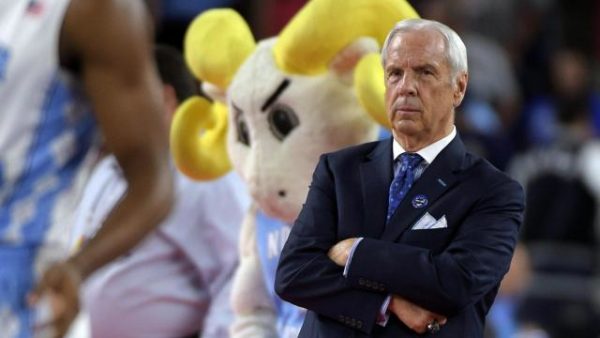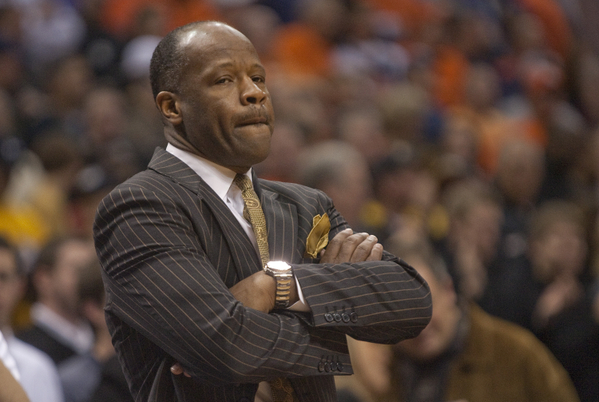Rushed Reactions: #1 North Carolina 72, #8 Arkansas 65
Posted by Brad Jenkins (@bradjenk) on March 19th, 2017RTC will be providing coverage of the NCAA Tournament from start to finish. Brad Jenkins (@bradjenk) is in Greenville this weekend.

Roy Williams leads North Carolina back to the Sweet 16 for the ninth time in his 14 years at the helm. (Lance King/wralsportsfan.com)
Three Key Takeaways.
- What a turnaround we had. After the first 16 minutes of action North Carolina was in complete control of the game or so it seemed. The Tar Heels built a 17-point lead by dominating Arkansas on the defensive end of the floor as the Razorbacks committed 10 turnovers and were shooting close to 25 percent from the floor with four minutes before intermission. Suddenly things changed dramatically and Arkansas closed the half on a 16-6 run. That momentum carried over into the second half as Arkansas surged past the Tar Heels before North Carolina rallied to win a game that it appeared to have in the bag long before. With the game in the balance the Tar Heel defense came up big again as Arkansas failed to score on its last five possessions.
- For some reason, this North Carolina team doesn’t finish games very well away from home. For most of the year the Tar Heels have struggled to beat good teams when they aren’t playing in the Smith Center, which is surprising for such a veteran team. Fortunately for Roy Williams, they managed to make enough plays to win a tight game tonight, but the way they almost melted down is still concerning. As Arkansas made its comeback, the Hogs were greatly aided by the Tar Heels’ sloppy play – 10 second half turnovers that became 17 Arkansas points. Perhaps this year’s North Carolina team misses the steadying influence of departed guard Marcus Paige. As the competition improves, the Tar Heels must be a better 40-minute team to make it to Phoenix.
- Arkansas shot well enough to win after a slow start. To have a chance to upset the Tar Heels, Arkansas needed to have an effective shooting night from the perimeter. That was certainly not the case early as the Razorbacks clanked their first five shots from deep. But after that cold beginning, they heated up considerably – making eight of their next 13 from behind the arc and ended the night at 38.1 percent on three-pointers. JUCO transfer Daryl Macon led the Arkansas shooting comeback, coming off the bench to make 3-of-5 from behind the arc.
Player of the Game. Kennedy Meeks, North Carolina. The Tar Heels’ senior center led his team with 16 points and collected a game-high 11 boards. His putback basket in the last minute gave his team a three-point lead and basically clinched the game. Meeks was also instrumental to North Carolina’s defensive effort, blocking three shots and helping to hold Moses Kingsley to 4-of-12 shooting. Read the rest of this entry »











































